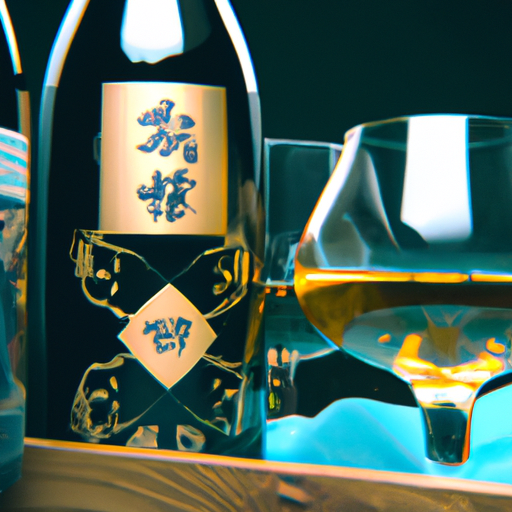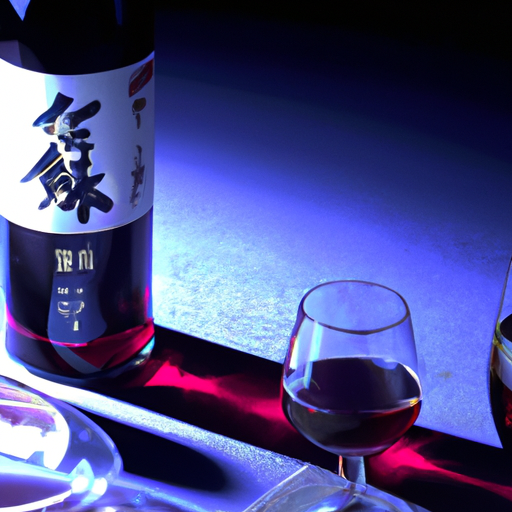
The History and Origins of Legendary Chinese Wines
China has a rich history of winemaking that dates back thousands of years. The origins of Chinese wine can be traced back to the Neolithic period, where evidence of fermented beverages made from rice, honey, and fruit has been found. These early wines were not only consumed for their intoxicating effects but also played a significant role in religious ceremonies and social gatherings.
One of the most famous legends surrounding the origins of Chinese wine is the story of the Yellow Emperor, Huangdi. According to ancient texts, Huangdi was the first to cultivate grapes and make wine in China. He is said to have discovered the art of winemaking while observing a flock of birds eating fermented grapes and becoming intoxicated. Inspired by this, Huangdi began experimenting with grapes and eventually developed a method for making wine.
Another legendary figure in Chinese winemaking is Li Bai, a renowned poet from the Tang Dynasty. Li Bai was known for his love of wine and often wrote about it in his poems. He is said to have traveled extensively throughout China, seeking out the best wines and sharing his knowledge with others. Li Bai’s passion for wine and his poetic descriptions of its effects on the senses have made him a beloved figure in Chinese wine culture.
During the Han Dynasty, wine production in China reached new heights. The Han Dynasty was a time of great cultural and technological advancements, and winemaking was no exception. The Han people developed new techniques for fermenting and aging wine, resulting in a higher quality product. Wine became an important part of the Han Dynasty’s social and cultural life, with elaborate banquets and ceremonies centered around the consumption of wine.
In addition to its cultural significance, Chinese wine also played a role in traditional Chinese medicine. Wine was believed to have medicinal properties and was often used as a tonic or remedy for various ailments. The Chinese believed that wine could invigorate the body, improve circulation, and promote overall health. This belief in the healing powers of wine has persisted throughout Chinese history and is still prevalent in traditional medicine practices today.
Over the centuries, Chinese winemaking techniques have continued to evolve and improve. Today, China is one of the largest producers of wine in the world, with a wide variety of styles and flavors to offer. From the sweet and fruity wines of the Shandong province to the bold and robust reds of the Ningxia region, Chinese wines have gained recognition and acclaim on the international stage.
In conclusion, the history and origins of Chinese wine are steeped in legend and tradition. From the mythical tales of the Yellow Emperor to the poetic musings of Li Bai, wine has played a significant role in Chinese culture for thousands of years. The development of winemaking techniques during the Han Dynasty and the belief in the medicinal properties of wine have further solidified its place in Chinese society. Today, Chinese wines continue to impress with their quality and diversity, making them a must-try for any wine enthusiast.
The Cultural Significance of Chinese Wine in Ancient China

The Cultural Significance of Chinese Wine in Ancient China
Chinese wine has a long and storied history that dates back thousands of years. In ancient China, wine held great cultural significance and played a central role in various aspects of society. From religious ceremonies to social gatherings, wine was an integral part of Chinese culture.
One of the earliest mentions of wine in Chinese history can be found in the Shang Dynasty, which existed from the 16th to the 11th century BC. During this time, wine was primarily used for religious rituals and offerings to the gods. It was believed that wine had the power to connect the mortal world with the divine, and thus played a crucial role in communicating with the spiritual realm.
As Chinese civilization progressed, wine became more than just a religious tool. It began to play a significant role in social gatherings and celebrations. Wine was seen as a symbol of wealth and status, and those who could afford it would often host elaborate banquets where wine flowed freely. These banquets were not only an opportunity for people to enjoy the taste of wine but also a chance to showcase their social standing and hospitality.
In addition to its role in religious and social contexts, wine also had medicinal properties in ancient China. Traditional Chinese medicine often incorporated wine as a key ingredient in various remedies. It was believed that wine could help improve blood circulation, relieve pain, and even prolong life. As a result, wine was not only consumed for pleasure but also for its perceived health benefits.
One of the most famous Chinese wines from ancient times is the legendary “Yellow Wine.” This wine, also known as Huangjiu, has a history that spans over 2,500 years. It is made from fermented grains, such as rice or millet, and is known for its rich aroma and mellow taste. Yellow Wine was highly regarded in ancient China and was often used as a tribute to the emperor. It was also a popular gift among nobles and officials.
Another renowned Chinese wine is “Rice Wine,” also known as Mijiu. This wine has a history that dates back to the Zhou Dynasty, which existed from the 11th to the 3rd century BC. Rice Wine is made by fermenting glutinous rice and has a sweet and slightly acidic taste. It was commonly consumed during festivals and special occasions, and its production techniques were passed down through generations.
The cultural significance of Chinese wine in ancient China cannot be overstated. It was not only a beverage but also a symbol of wealth, status, and spirituality. Wine played a central role in religious ceremonies, social gatherings, and even traditional medicine. The legendary Yellow Wine and Rice Wine are just two examples of the many wines that have shaped Chinese culture throughout history.
Today, Chinese wine continues to evolve and gain recognition on the global stage. With modern winemaking techniques and a growing appreciation for Chinese culture, Chinese wines are making their mark in the international wine industry. However, the rich cultural heritage and significance of Chinese wine in ancient China will always remain a testament to its enduring legacy.
Exploring the Unique Flavors and Characteristics of Legendary Chinese Wines
China has a rich history of winemaking that dates back thousands of years. From the ancient times of the Han Dynasty to the modern era, Chinese wines have evolved and developed their own unique flavors and characteristics. In this article, we will explore some of the legendary Chinese wines that have captivated wine enthusiasts around the world.
One of the most famous Chinese wines is Baijiu, a strong distilled spirit that has been produced for centuries. Baijiu is made from fermented sorghum, wheat, or rice, and its production process involves multiple steps, including fermentation, distillation, and aging. The result is a potent liquor with a distinct aroma and flavor profile.
Maotai, a type of Baijiu, is often considered the national liquor of China. It is produced in the town of Maotai in Guizhou province and has a history that spans over 2,000 years. Maotai is known for its complex and mellow flavor, with hints of soy sauce, caramel, and dried fruit. It is often enjoyed during special occasions and is a symbol of prestige and luxury.
Another legendary Chinese wine is Huangjiu, a traditional fermented rice wine. Huangjiu has a history that can be traced back to the Shang Dynasty, making it one of the oldest types of wine in the world. It is made by fermenting glutinous rice with a special type of yeast, resulting in a sweet and aromatic wine. Huangjiu comes in various styles, ranging from dry to sweet, and is often enjoyed as an aperitif or paired with Chinese cuisine.
In recent years, Chinese red wines have gained recognition for their quality and unique characteristics. The Ningxia region, located in northwestern China, has emerged as a prominent wine-producing area, known for its high-altitude vineyards and favorable climate. The region’s Cabernet Sauvignon wines have garnered international acclaim for their rich flavors, balanced tannins, and aging potential.
One of the most renowned Chinese red wines is the Grace Vineyard Tasya’s Reserve Cabernet Sauvignon. Produced in Shanxi province, this wine has received numerous awards and accolades for its exceptional quality. It showcases the unique terroir of the region, with notes of blackcurrant, plum, and spice, and a velvety texture that lingers on the palate.
Moving to the eastern part of China, the Shandong province is also known for its production of high-quality wines. The region’s moderate climate and fertile soil create favorable conditions for grape cultivation. The Changyu Pioneer Wine Company, founded in 1892, is one of the oldest and most prestigious wineries in China. Their Changyu Cabernet Gernischt, a red wine made from a grape variety originally from Bordeaux, has gained popularity for its smooth tannins, vibrant fruit flavors, and elegant structure.
In conclusion, the world of Chinese wines is vast and diverse, offering a wide range of flavors and characteristics. From the strong and aromatic Baijiu to the sweet and aromatic Huangjiu, and the internationally acclaimed red wines from Ningxia and Shandong, Chinese wines have a rich history and a promising future. Whether you are a wine connoisseur or simply curious about exploring new flavors, these legendary Chinese wines are definitely worth a try.






